Search Results
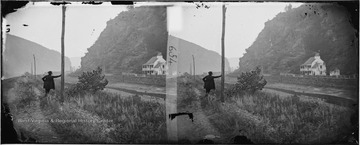
- IDNO:
- 039079
- Title:
- Harpers Ferry Gap, Harpers Ferry, Va. (W. Va. )
- Date:
- 1862/10
- Description:
- Looking east along the Potomac River on the Virginia (West Virginia) side. The ruins of the Armory can be seen on the left and telegraph poles line the damaged tracks. Two men, one leaning on a telegraph pole and another next to the house are not identified. The photograph was taken several weeks after the September,1862 battle when Stonewall Jackson's artillery shelled the town, forcing the Union troops to surrender.
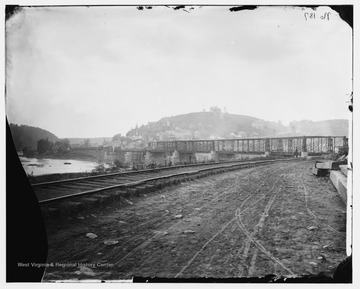
- IDNO:
- 039080
- Title:
- Baltimore & Ohio Railroad Bridge Over Potomac River Across From Harpers Ferry, W. Va.
- Date:
- ca.1863
- Description:
- One of the nine reconstructed bridges (on the same spot) connecting Harpers Ferry over the Potomac River to Maryland. This bridge was also eventually destroyed during the Civil War.
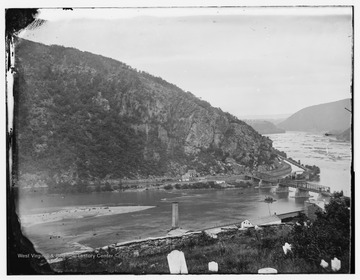
- IDNO:
- 039081
- Title:
- Maryland Heights Across Potomac River at Harpers Ferry, Va, (W. Va.)
- Date:
- ca. 1862
- Description:
- Maryland, the Chesapeake & Ohio Canal and a reconstructed Baltimore and Ohio Railroad bridge on the Potomac River as viewed from the Harpers Ferry cemetery. Note the head stones in the foreground and the smoke stack of the burned out United States Armory below. The photograph was taken during the Civil War.
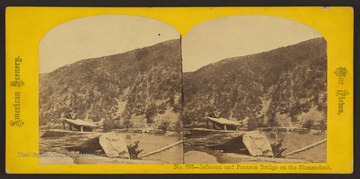
- IDNO:
- 039082
- Title:
- View of Jefferson Rock and Pontoon Bridge Over Shenandoah River, Harpers Ferry, W. Va.
- Date:
- ca. 1863
- Description:
- An unidentified man sits on Jefferson Rock above the Shenandoah River at Harpers Ferry. A pontoon bridge has been laid across the river to temporarily replace the destroyed bridge. The bridge's piers can be seen rising out of the river.
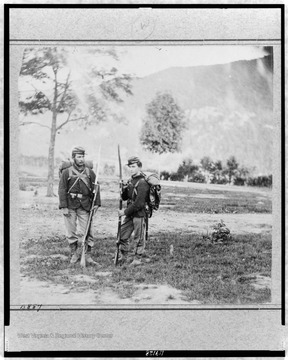
- IDNO:
- 039083
- Title:
- Soldiers of 22nd New York Militia, Union Army, Harpers Ferry, Va. (W. Va.)
- Date:
- 1861
- Description:
- Two unidentified Union soldiers in uniform, full pack and armed on Camp Hill above Harpers Ferry during the Federal forces occupation of the area early in the Civil War. Note the huge bayonets attached to their rifles.
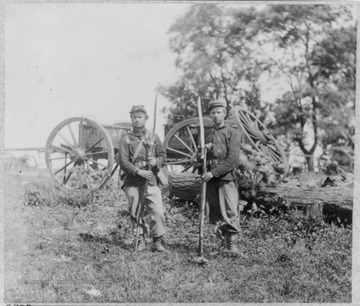
- IDNO:
- 039084
- Title:
- Soldiers of 22nd New York Militia, Camp Hill, Harpers Ferry, Va. (W. Va.)
- Date:
- ca. 1861
- Description:
- Two unidentified soldiers of the 22nd New York State Militia, Union Army, in full uniform and armed, standing in front of a caisson. Note the caisson carries a spare wheel.
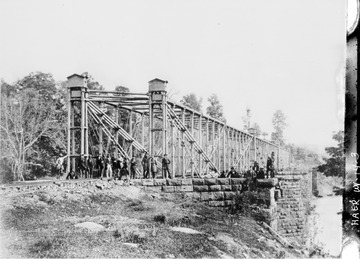
- IDNO:
- 039086
- Title:
- Baltimore and Ohio Railroad Bridge at Fairmont, Va. (later W. Va.) Destroyed During Civil War
- Date:
- ca.1855
- Description:
- This 305 foot long iron bridge over the Monongahela River in Marion County was built in 1852 at the astronomical price of 1/2 million dollars and was, at that time, the longest iron bridge in the country. Confederate General "Grumble" Jones targeted this bridge during his infamous 1863 raid. After two failed attempts to blow the bridge, he succeeded on the third try.
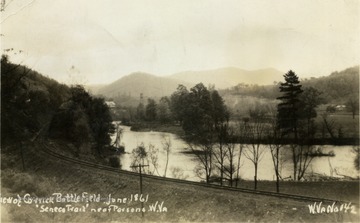
- IDNO:
- 039130
- Title:
- Corricks Ford Battlefield and Seneca Trail on Cheat River, Parsons, Tucker County, W. Va.
- Date:
- ca. 1934
- Description:
- Photograph postcard of Corricks Ford on the Cheat River where Union forces commanded by General Thomas Morris, defeated Confederate troops under General Robert Garnett, July 13,1861. Garnett was killed in the fight, the first general officer to die in action in the Civil War.
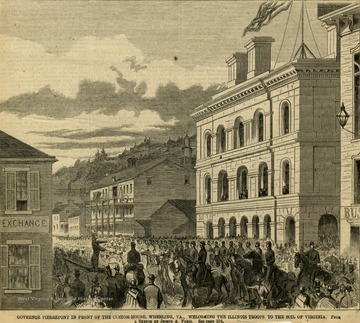
- IDNO:
- 039186
- Title:
- Virginia Governor Francis H. Pierpont and Illinois Troops, Wheeling, Va. (W. Va.)
- Date:
- 1861/08/12
- Description:
- A wood craving illustration published in "The New York Illustrated News", with the caption: "Governor Pierrpont (sic) in front of the Custom-House, Wheeling, Virginia., welcoming the Illinois troops to the soil of Virginia." Pierpont was the governor of the Restored Government of Virginia, loyal to the Union during the Civil War.
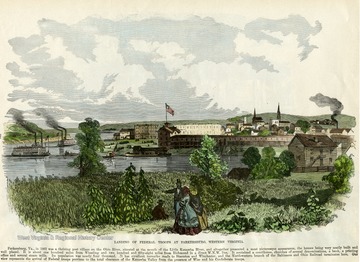
- IDNO:
- 039188
- Title:
- Landing Of Federal Troops at Parkersburg, Western Virginia
- Date:
- ca. 1861
- Description:
- A colored wood craving illustration of Parkersburg on the Little Kanawha River in Wood County, Va. (later West Virginia). Several Federal troops from states west of the Ohio River were deployed here during the Civil War to hold vital railroad lines and turnpikes of which Parkersburg was the terminus.
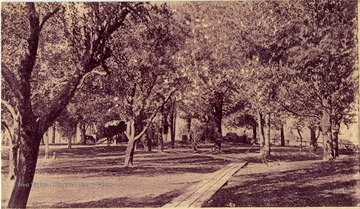
- IDNO:
- 039652
- Title:
- Stonewall Jackson Headquarters, Winchester, Va.
- Date:
- 1912/11/22
- Description:
- Postcard photograph of Stonewall Jackson's Headquarters. Most of the building is obscured by trees. See back of the original image for correspondence.
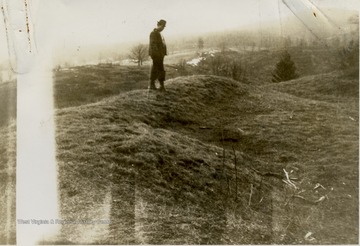
- IDNO:
- 039762
- Title:
- Part of Confederate Fortification at Camp Bartow , Pocahontas County, W. Va.
- Description:
- Confederate defenses established by General Henry Jackson, straddled the Staunton-Parkersburg Turnpike. The position was defended in an artillery fight on October, 1861, known as "The Battle of Greenbrier River"











